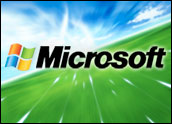
Is Microsoft Bottoming Out? – Part 1
You’d think that Microsoft was all but dead, judging by some of the industry scuttlebutt. Microsoft’stactical and strategic technology and business missteps are well publicized and dissected adinfinitum.
Less well documented are Microsoft’s strengths — from both a consumer and enterpriseperspective — and there are plenty of those.
Microsoft’s Consumer Strengths
One of the most notable company wins in the past five years is the Xbox 360 and Kinect.
Simply put, this is an unqualified success. The latest statistics releasedearlier this month by the NPD Group show that Microsoft has a 47 percent market share and sold257,000 Xbox 360 units in the U.S. in June, besting its rivals the Sony PlayStation 3 andNintendo Wii for the 18th consecutive month.
However, Microsoft and indeed all the game hardware vendors find their sales shrinking due to the sharp increase in the number of users playinggames on their smartphones.
In Microsoft’s 2012 third fiscal quarter ending in March, Xbox360 sales dropped 33 percent to US$584 million. The consumer space is notoriously fickle, and gamers are always looking for the next big thing.
Microsoft’s ace in the hole is the Kinect motion controller, which still has a lot of appeal. The company is banking on that, as well as slew of newapplications and functions like the Kinect PlayFit Dashboard, which lets users track the numberof calories they burn when they play Kinect games.
Microsoft continues to dominate and innovate in the consumer video game market segment and isshowing the necessary agility to transition as needed.
Microsoft’s Enterprise Strengths
Microsoft is also doing well among enterprise customers. While the Windows operating systemand Office productivity suite may not be the show stoppers and headline grabbers they were in the 80s, 90s and into the 2000s, Microsoft has addressed user concerns and solidifiedthe reliability and uptime of the software.
Performance/Reliability: Some 82 percent of the 500 respondents to ITIC’s 2011-2012 Global Server Hardware and Server OS Reliability Survey in January of this year indicated theirorganizations experienced less than one unplanned, severe/lengthy Tier 3 outage per server, perannum on Windows Server 2008 and 2008 R2 platforms.
Windows Server 2008 R2 scored thebiggest reliability gains in the survey. The 2011-2012 survey respondents now rank WindowsServer 2008 R2 as among the top three most reliable mainstream server operating systems.
Windows Server 2008 R2’s reliability renaissance is especially impressive since Microsoft’sWindows Server OS noticeably lagged behind the majority of the Unix, Linux and OpenSource distributions in the ITIC/Sunbelt Software (now GFI Software) 2008 and 2009 ServerReliability surveys.
Security: Microsoft has turned what used to be its most glaring deficit into one of its chiefstrengths. Microsoft’s decade-old, ongoing Trustworthy Computing Initiative has resulted intangible gains in the security and overall reliability and performance of its products — mostnotably two of its core platforms: SQL Server and Windows Server.
The enhanced security andstrong synergies between the underlying Windows Server 2008 R2 Operating System and theSQL Server 2008 R2 database platform provide organizations with arguably the most reliableand secure operating environment in the history of these solutions.
The same ITIC 2011-2012 Global Server Hardware and Server survey found that Windows Server 2008 R2 vied with IBM’s AIX v 7.1 for the most secure server OS as ranked by users. Nine out of 10 survey participants rated Windows Server 2008 R2 Security as “excellent” or “very good.”And none of the respondents gave Windows a “poor” or “unsatisfactory” grade.
Statistics obtained from the National Institute of Standards and Technology’s Computer Vulnerabilitiesand Exposure database (NIST CVE) indicate that for the past nine years SQL Server has been themost secure of any of the major database platforms. SQL Server recorded the fewest number ofreported vulnerabilities — just 52 from 2002 through 2011 — of any major database.
NIST is thegovernment agency that monitors security vulnerabilities by technology, vendor and product.In 2010, SQL Server compiled a perfect record — no security vulnerabilities were recorded byNIST CVE; it recorded only three vulnerabilities during 2011.
Its closest competitor, MySQL, recorded 99 security flaws — twice as many as SQL Server overthe same period. By contrast, during the same period spanning 2002 through 2011, the NISTCVE recorded 361 security vulnerabilities associated with the Oracle database platform, thehighest total of any major vendor. Oracle had almost seven times as many reported security flawsas SQL Server during the same time span.
Enterprise Solutions: Microsoft is also making tangible gains in crucial technology arenaslike virtualization, cloud computing, and pivotal applications like customer relationshipmanagement (CRM) and business intelligence (BI).
After a slow start, Microsoft’s Hyper-V is rapidly gaining ground on market leader VMware andexpanding its presence among enterprise users, as well as among small and mid-sized businesses.Microsoft continues to fortify and expand its Azure cloud platform products and strategy.
Additionally, Microsoft Dynamics CRM is one of the top three solutions in that space, along withmarket leader Salesforce.com and SugarCRM.
Finally, after nearly 40 years in business, Microsofthas developed one of the most extensive enterprise application, support and channel ecosystems.Resellers, IT managers and consultants find it easy to access technical documentation and fixeswhen they need them.
Microsoft Office: Despite being targeted by Google Apps, Microsoft Office retains its dominant position among corporate users, thanks in no small measure to the depth and breadth of itsenterprise ecosystem and broad technical service and support offerings, which 11 year-oldGoogle is not yet capable of matching.
In July, Microsoft unveiled the newest version of itsOffice software, which incorporates a touchscreen user interface designed to provide integrationand interoperability with the company’s forthcoming Surface tablets.
The new version of Office,slated to ship this fall, will also deliver integration with Microsoft’s newest acquisition, Yammer,which it purchased in June for $1.2 billion in cash. Ballmer said in a live webcast thatMicrosoft will make the private social network service available to Office users for free, andintegrate it with SharePoint and Microsoft Dynamics.
Office 15 also now will come with 60 free minutes of the online phone service Skype, whichMicrosoft purchased in 2011.
And, in order to better compete with Google Drive and Apple’siCloud integration, the upcoming version of Office will be integrated with Microsoft’s onlinestorage system, SkyDrive. Users will be able to synchronize their files, settings and templates across myriad devices such as tablets, notebooks and Windows Phone smartphones. Microsoftwill also ship new editions of the cloud-based Office 365.
Summing Up
Microsoft has stumbled and fallen many times with respect to products, timing and executionin the last 10 years. It inarguably lags well behind Google and Apple in key markets likesearch engines, mobility and tablets, much to its detriment. As a result, Microsoft is no longerconsidered indomitable. In addition, the declines in PC sales are challenging Microsoft to changeits tactics and strategy, and to step up its initiatives to spur revenue growth.
The forthcoming Surface tablet could be a game changer; that remains to be seen. It will mostcertainly be disruptive. Microsoft notes that fact on page 14 of its compulsory 10-K annual earnings report filing, acknowledging that it faces a rockyroad and may alienate some of its OEM partners when it ships the Surface tablet.
In the 10-K filing, Microsoft emphasizes its established ecosystem of users, applicationdevelopers, and partners that provide platforms that accelerate growth. Windows 8, the Surfacetablet and the associated cloud-based services could change that.
Microsoft also acknowledges in the filing what everyone knows: Its operating marginsare under assault from competitors — most notably Apple — that control the hardware andsoftware (e.g., the Macs, iPhone and iPad).
In recent years, Microsoft has also waded intothese waters with the Xbox and its emerging Azure cloud computing platform. Specifically,Microsoft discloses in the 10-K filing that “… we derive substantial revenue from licenses ofWindows operating systems on personal computers. The proliferation of alternative devices andform factors, in particular mobile devices such as smartphones and tablet computers, createschallenges from competing software platforms. These devices compete on multiple basesincluding price and the perceived utility of the device and its platform … .”
The most cautionary statement in Microsoft’s 10-K filing notes that “even if many users view thesedevices as complementary to a personal computer, the prevalence of these devices may make itmore difficult to attract applications developers to our platforms. In addition, our Surface deviceswill compete with products made by our OEM partners, which may affect their commitment toour platform.”
Microsoft’s concerns are well founded. Frankly, though, this is an issue confronting nearly allhigh-technology vendors as they seek to grow their business through diversification. In otherwords, even steadfast partners find themselves becoming rivals as they expand outside of theircore competencies.
For years, Apple and Google enjoyed a very cozy relationship: Google’sEric Schmidt had a seat on Apple’s board for years but resigned in August of 2009, citing aconflict of interest as the Android and Chrome OS directly competed with Apple’s iOS and MacOS X.
By virtually any measure, Microsoft will have a long, uphill climb to make an impact in thesmartphone and tablet segments. It must offer a clear, compelling product road map and cogentmarketing strategy to convince customers to upgrade to Windows 8, Windows Server 2012, andOffice 13 and Office 365. Execution is everything.
Microsoft is far from finished. It faces steeper challenges now than it ever has. The company’sfinancials are still solid. Microsoft can also boast of many wins in the past decade, not the leastof which is solidifying and bolstering the performance, reliability, uptime and security of its coreWindows and Office products, and improving customer satisfaction.
Most immediately, Microsoft needs to win big this fall with its Office, Windows 8 and Surfacetablets. Pressure anyone?


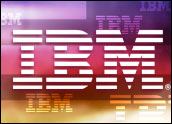
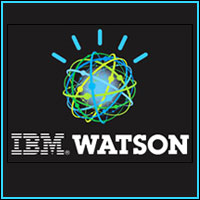
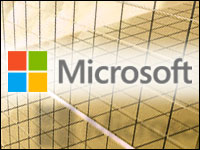
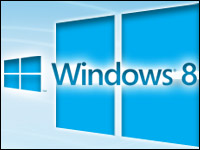
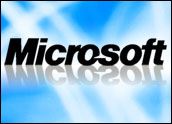

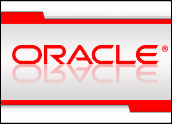
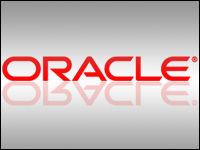












































Social Media
See all Social Media